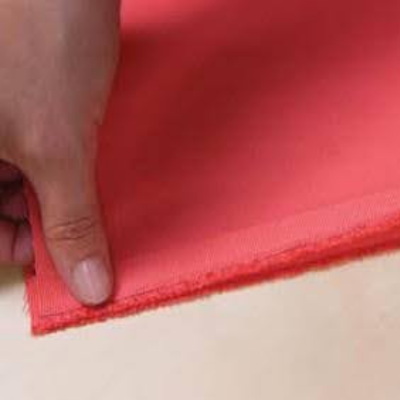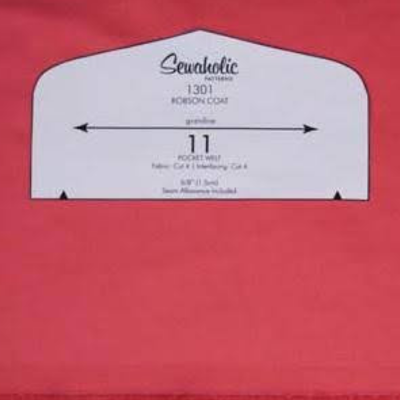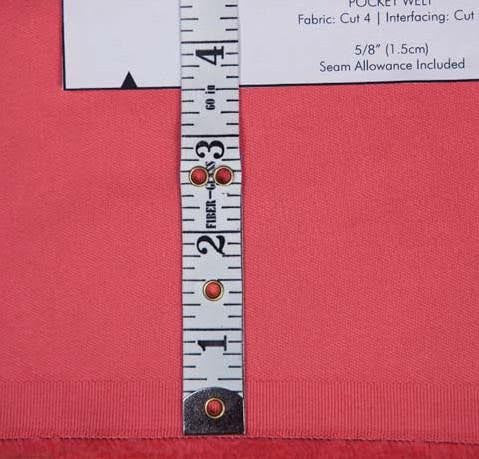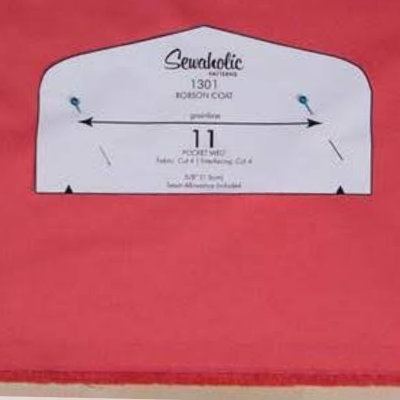How to Use Sewing Pattern Grain Lines
Welcome to our guide on grain lines! After teaching 100s of sewists, we've discovered that many sewists are surprised when they learn more about what the grain line marking on a sewing patterns is, and how ignoring it can drastically change the outcome of their project.
If you've ever sewn or worn a piece of clothing that just doesn't stay in place on your body, like a t-shirt that always shifts the side seam away from your side, then this grain line guide is for you.
Grain Line - What is it?
The grain line is a printed line on pattern pieces that marks the lengthwise grain, also called the straight of goods or straight grain. It’s usually marked with an arrow. This line is used to help align your pattern pieces on your fabric so that they are cut on grain.
The grain is the lengthwise direction of your fabric, running parallel to the selvage. Think of a vertically striped fabric, where the stripes go up and down the fabric. That’s what the grain line would look like if you could see it.
Garments cut on grain will hang straight along the lines of the body, while garments cut off grain may twist around your body or hang unevenly.
Sometimes the grain line will appear as a “cut on fold” marking on the pattern piece. This marking is directing you to fold the fabric on the straight grain and then line up the edge of this piece along the fold of the fabric. When you cut it out, you’ll end up with a mirrored piece with the centerline aligned with the lengthwise grain.
Opposite to the lengthwise grain is the crosswise grain. The crosswise grain runs across the width—that’s an easy way to remember the difference.
Examples of the Grain Line marking on patterns

The Grain Line marking can show up in different ways on pattern pieces.
On the left, the double ended arrow marks the grain line.
The pattern piece on the right shows a Place on Fold marking. This directs you to fold the fabric on the straight grain before cutting the pattern piece.
-
WHEN DO YOU USE IT?
- You’ll use the grain line every time you cut out pattern pieces from fabric. Every pattern piece is marked with a grain line or a cut on fold marking.
- If you are cutting striped or plaid fabric, the grain line will help you to line up the stripe and plaid lines. Take a look at the striped fabric above. Striped, plaid and other vertically printed or textured fabrics make it easy to see where the grain line is. See how the grain line arrow is parallel to the direction of the stripes?
- When you see diagonal stripes or plaids, it usually means the fabric is cut on the bias. True bias refers to a 45° angle from the grain line— exactly halfway between the lengthwise grain and the crosswise grain. On your pattern pieces, the grain line will be marked with a diagonal line to indicate cutting on the bias.
HOW TO LAY OUT FABRIC ACCORDING TO THE GRAIN LINE
To start, look at the fabric-cutting diagram and find the one for the garment you’re making. Some patterns are cut with one fold, selvedges together; sometimes there will be two folds with the selvedges folded to meet in the middle. Sometimes there are both types of cutting layouts for a single view!

PREPARE FABRIC
Fold your fabric in half according to the cutting layout. Line up the selvedges so they are even, and smooth out any wrinkles. Don't worry about the cut edges of your fabric staying together, they might not match perfectly while your selvedges do.
Once the selvedges are aligned, pay close attention to the opposite edge's fold in your fabric. This fold should lay completely flat without any wrinkles. Removing the fold in your fabric might require shifting the layers slightly while always keeping the selvedges aligned.

PATTERN PLACEMENT
Place your pattern on the fabric. Rotate the pattern piece until the grain line is parallel to the selvedge or to the fold.
Don’t worry about having it exactly parallel yet; you’ll fix that in the next step.

MATCHING THE GRAIN LINE
Starting at one end of the grain line arrow, measure from the arrow to the fold or selvedge edge of your fabric, whichever is closer.
Note this measurement. It's important that this measurement is precise. Pin the pattern in place next to the grain line arrow.

ON GRAIN PATTERN PIECE
Measure from the opposite end of the grain line arrow toward the same fold or selvedge. You want this measurement to be exactly the same. If it is, then your garment piece is cut on grain. Rotate the pattern piece until the measurement is the same at both ends of the arrow.
With these two points pinned at each end of the grain line arrow, the pattern piece is aligned with the lengthwise grain of the fabric and you’re ready to pin the rest of the piece in place.
YOU CAN DO IT!
The payoff measuring the placement of your pattern pieces is huge! When your pattern pieces align with the fabric grain, your projects are automatically better produced and more comfortable to wear!
